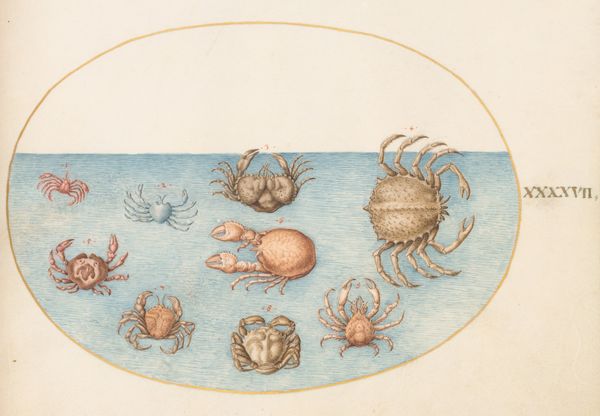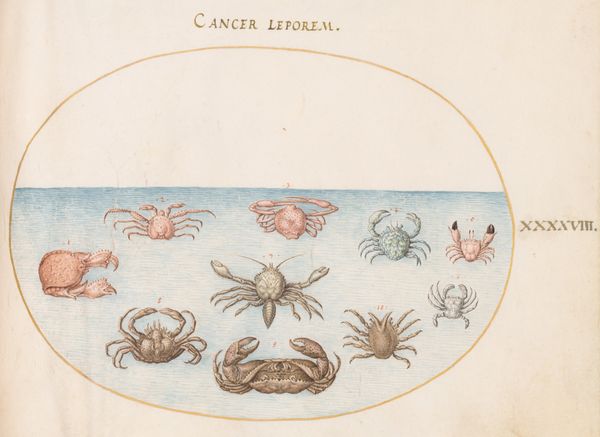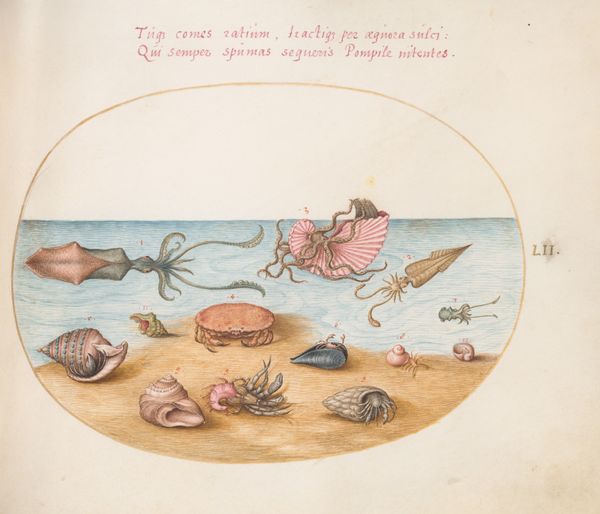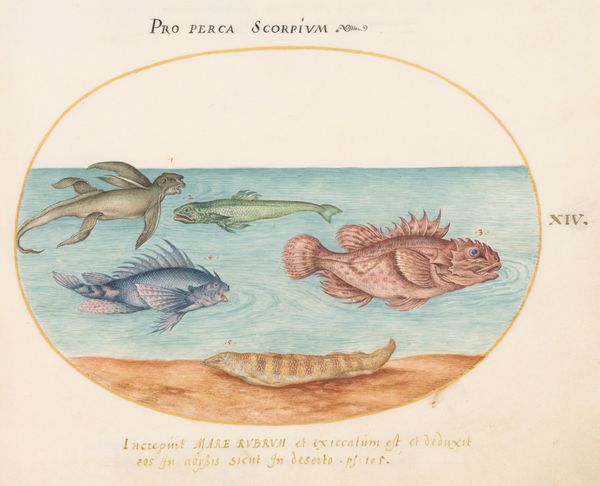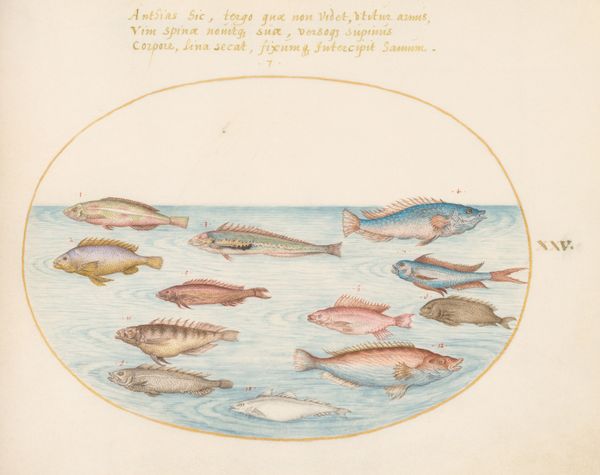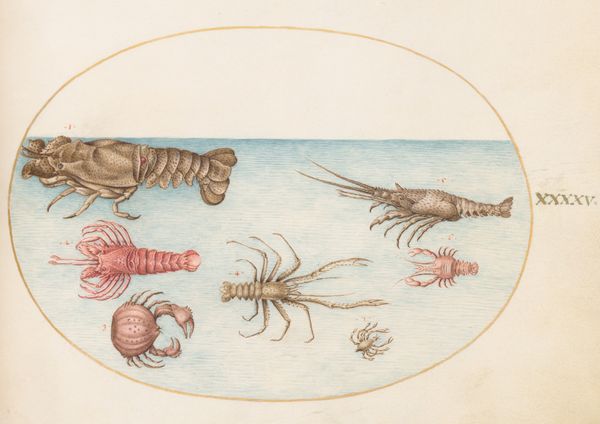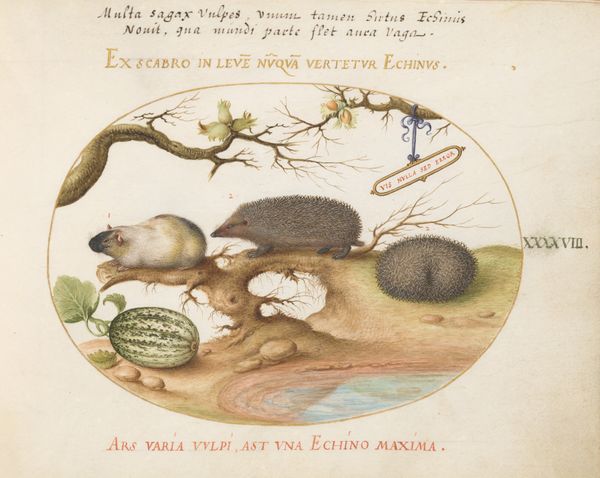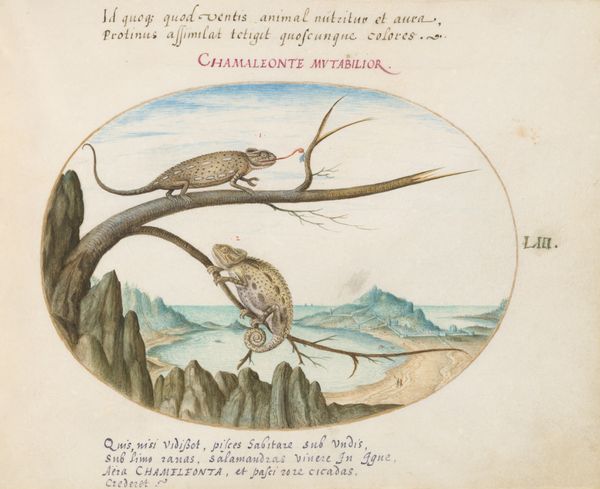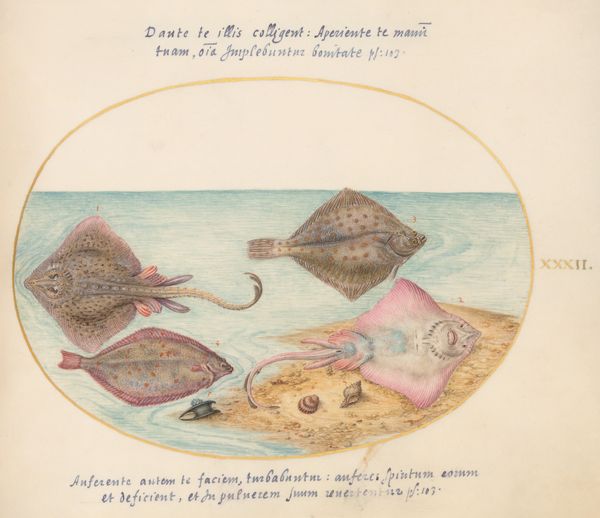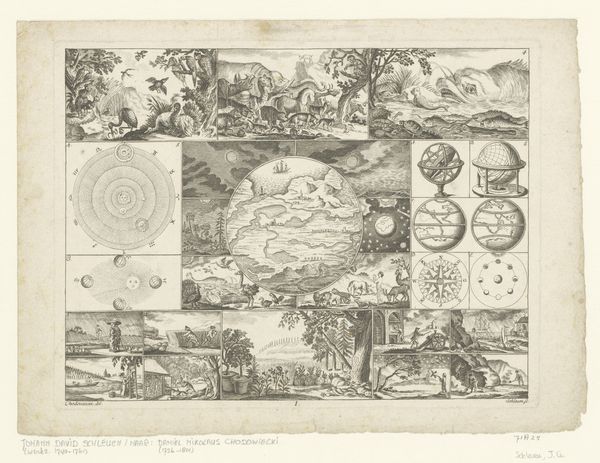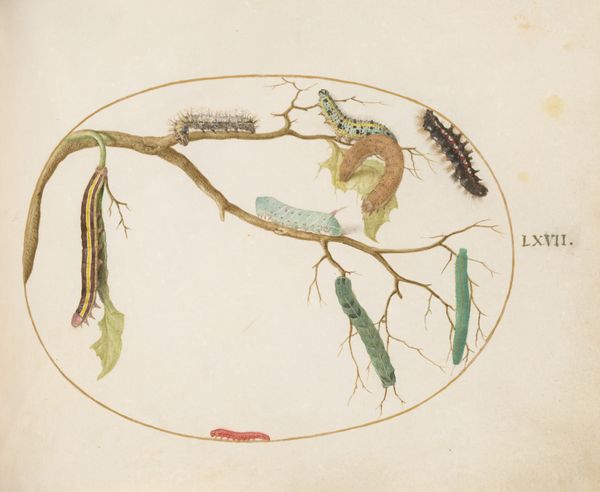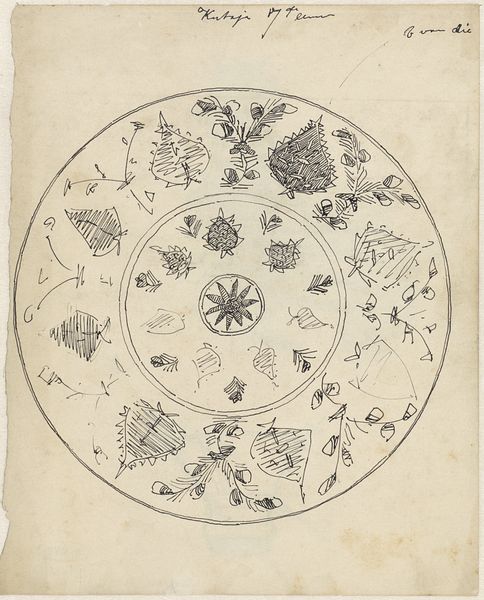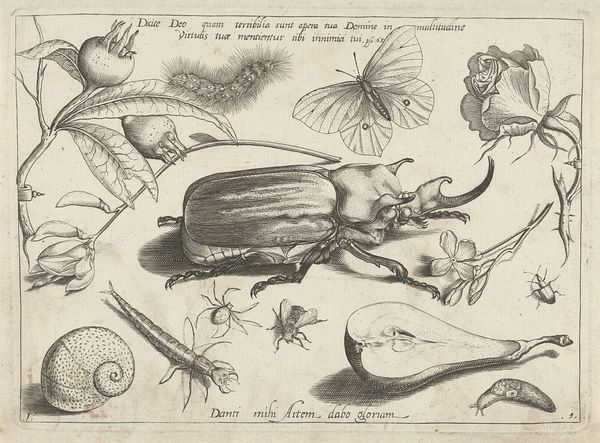
Plate 53: Sea Cucumbers, Coral, Octopus, Starfish, Squid, and Other Sea Creatures c. 1575 - 1580
0:00
0:00
drawing, watercolor
#
drawing
#
water colours
#
mannerism
#
11_renaissance
#
watercolor
#
coloured pencil
#
watercolor
Dimensions: page size (approximate): 14.3 x 18.4 cm (5 5/8 x 7 1/4 in.)
Copyright: National Gallery of Art: CC0 1.0
Curator: This artwork, created around 1575-1580 by Joris Hoefnagel, is titled "Plate 53: Sea Cucumbers, Coral, Octopus, Starfish, Squid, and Other Sea Creatures." It’s a watercolor drawing showcasing the artist’s meticulous detail. Editor: It feels almost unsettling, doesn’t it? The delicate lines and soft watercolor palette can't quite disguise the strangeness of these marine forms. There's an intense observation of texture; you can practically feel the leathery skin of the sea cucumbers and the rough surfaces of the starfish. Curator: Hoefnagel wasn’t just documenting sea life, he was contributing to a larger project that sought to categorize and understand the natural world. Think about the context: This was a period of intense exploration and colonization. These images fed into that thirst for knowledge and control, even reflecting ideas around race and hierarchy present at the time. How might the subjects have felt under the looking glass? Editor: Yes, the act of representing becomes the act of owning. I'm interested in how these detailed renderings would have been produced. The layers upon layers of watercolour—what was Hoefnagel's process for building these forms? These objects, plucked from the ocean, placed under intense scrutiny in a studio… They transform from living beings into specimens. I am drawn to how coral has become reduced from the original formation into something other than life, a red object sitting on a sea bed with all else. Curator: Absolutely. And consider the scientific lens through which Hoefnagel was viewing these creatures. While he strove for accuracy, his choices were informed by his own worldview. His perspective also shaped how his patrons—likely wealthy Europeans—consumed and understood this imagery, influencing perceptions about these sea creatures and, by extension, the world beyond their immediate reach. Editor: The means of distribution become so interesting. Who could consume these images? Who made them available? In which languages? These become loaded, culturally relevant images in their dissemination, and the colours help sell that. They add a heightened and alien aspect. Curator: Precisely. The work speaks to our continuous grappling with power, knowledge, and representation. How do we ethically depict and interpret the natural world and its inhabitants, acknowledging the complex layers of history and social context woven into the artwork itself? Editor: Seeing these natural items crafted as material in an artist's space changes one's entire perspective, I concur.
Comments
No comments
Be the first to comment and join the conversation on the ultimate creative platform.
